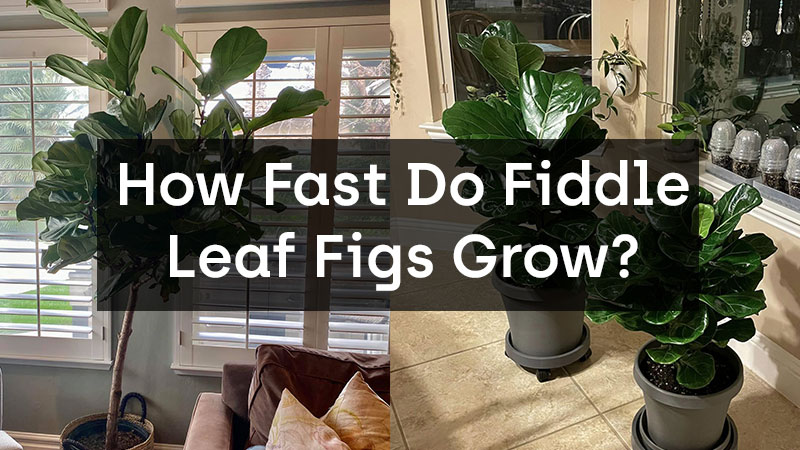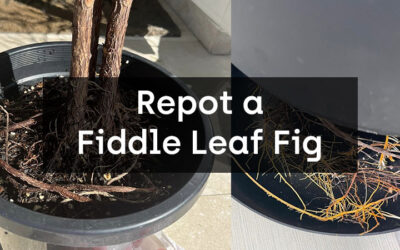Are All Fiddle Leaf Figs Fast-Growing?
Fiddle Leaf Figs (Ficus lyrata) are known for their stunning foliage and ability to add a touch of elegance to any space. When it comes to their growth rate, however, not all Fiddle Leaf Figs are created equal. While some individuals may exhibit rapid growth, others may grow at a slower pace. Several factors contribute to the growth rate of these plants, including genetics, care, and environmental conditions.
Signs Your Fiddle Leaf Fig Is Growing Well
Monitoring the growth of your Fiddle Leaf Fig is an essential part of ensuring its overall health and vitality. Here are a few signs that indicate your plant is thriving and experiencing healthy growth:
New Leaves
The emergence of new leaves is a clear indication that your Fiddle Leaf Fig is growing well. Keep an eye out for small, vibrant leaves unfurling from the stem. These new leaves signify that your plant is actively producing foliage and progressing in its growth cycle.
Thick Trunk
A robust and sturdy trunk is another positive sign of healthy growth in a Fiddle Leaf Fig. As the plant matures, its trunk thickens, providing structural support and stability. Observing a thickening trunk indicates that your Fiddle Leaf Fig is developing well and building a strong foundation.
Tall Growth
Height growth is perhaps the most noticeable indicator of a thriving Fiddle Leaf Fig. With optimal care, these plants can reach impressive heights. If your Fiddle Leaf Fig is steadily increasing in height, it suggests that it is receiving the necessary nutrients, light, and moisture for healthy growth.

How to Make Fiddle Leaf Figs Grow Faster
If you desire to accelerate the growth of your Fiddle Leaf Fig, there are several key factors to consider. By providing the right conditions and care, you can promote faster growth and help your plant reach its full potential. Here are some essential tips:
Adequate Watering
Proper watering is crucial for the growth of any plant, and Fiddle Leaf Figs are no exception. Ensure that you water your plant regularly, allowing the soil to slightly dry out between waterings. Overwatering can lead to root rot, so it’s important to strike the right balance and avoid waterlogged conditions.
Light Conditions
Fiddle Leaf Figs thrive in bright, indirect light. Position your plant near a window where it can receive ample sunlight without direct exposure to harsh rays. Consider rotating the plant occasionally to ensure even light distribution, promoting balanced growth.
Read Sunlight Requirements for Fiddle Leaf Fig
Humidity
These tropical plants appreciate a moderately humid environment. Increase humidity levels by misting the leaves regularly or placing a tray of water near the plant. You can also use a humidifier to create an optimal humidity range for your Fiddle Leaf Fig.
Soil Conditions
Using well-draining soil is vital for the growth of Fiddle Leaf Figs. Opt for a high-quality, nutrient-rich potting mix that allows excess water to escape easily. Additionally, consider adding organic matter or perlite to enhance drainage and aeration.
The Best soil for fiddle leaf fig
Fertilizing
Regular fertilization can provide the necessary nutrients to fuel your Fiddle Leaf Fig’s growth. Choose a balanced, water-soluble fertilizer specifically formulated for houseplants. Follow the instructions on the package to ensure you don’t over-fertilize, as this can harm the plant.
Regular Repotting
As Fiddle Leaf Figs grow, they may outgrow their current pots. Repotting your plant into a larger container with fresh soil promotes healthier root development and allows the plant to continue growing at a faster rate. Aim to repot your Fiddle Leaf Fig every one to two years or as needed.

Final Thoughts
Fiddle Leaf Figs have the potential to grow into stunning, statement-making plants with the right care and conditions. While not all Fiddle Leaf Figs grow at the same pace, by providing adequate watering, optimizing light conditions, managing humidity, ensuring proper soil conditions, fertilizing regularly, and repotting when necessary, you can encourage faster growth and help your plant thrive. Monitor your Fiddle Leaf Fig closely, observing signs of healthy growth such as the emergence of new leaves, a thickening trunk, and vertical height increase. With patience and proper care, you can enjoy the beauty and splendor of a rapidly growing Fiddle Leaf Fig in your home or office.
1. How often should I water my fiddle leaf fig?
It’s best to water your fiddle leaf fig when the top inch of soil feels dry. Avoid overwatering, as it can lead to root rot.
2. Can I place my fiddle leaf fig in direct sunlight?
While fiddle leaf figs love bright light, direct sunlight can scorch their leaves. It’s best to provide bright, indirect light or filtered sunlight.
3. How often should I prune my fiddle leaf fig?
Prune your fiddle leaf fig as needed to maintain its shape and promote bushier growth. Remove any dead or damaged leaves regularly.
4. Can I use any fertilizer for my fiddle leaf fig?
It’s recommended to use a balanced, water-soluble fertilizer specifically formulated for houseplants. Follow the instructions on the fertilizer package for best results.
5. Are fiddle leaf figs toxic to pets?
Yes, fiddle leaf figs are toxic to pets if ingested. Keep them out of reach of curious pets to ensure their safety.







0 Comments